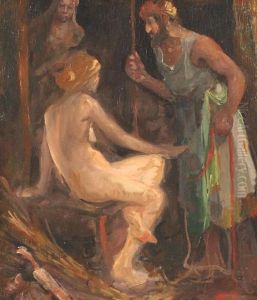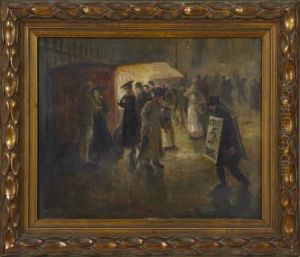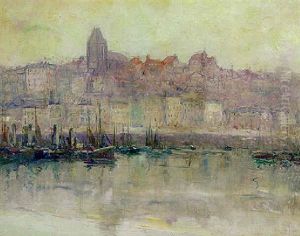Harvey Ellis Paintings
Harvey Ellis was an American architect, painter, and illustrator, known for his significant contributions to the Arts and Crafts movement and for his brief but impactful association with the architectural firm of Adler & Sullivan in Chicago. Born on October 17, 1852, in Rochester, New York, Ellis developed an early interest in art and architecture, which was influenced by the rich artistic environment of his hometown and the burgeoning American Arts and Crafts movement. Despite his lack of formal architectural training, Ellis possessed a natural talent for design and an innovative artistic vision that would come to define his career.
Ellis's architectural philosophy was deeply rooted in the Arts and Crafts movement, emphasizing the importance of craftsmanship, the beauty of natural materials, and the integration of architecture and decoration. His designs often featured intricate details, organic motifs, and a harmonious blend of form and function, characteristics that became hallmarks of the movement. In 1887, Ellis moved to St. Louis, where he worked on several architectural projects and honed his skills as a watercolorist and illustrator, contributing to architectural publications and exhibits.
In 1890, Ellis joined the esteemed firm of Adler & Sullivan in Chicago, where he worked alongside Louis Sullivan, a leading figure in American architecture. Although his tenure at the firm was brief, lasting less than a year, Ellis's influence was profound. He is credited with contributing to the design of several of the firm's most important projects, including the Wainwright Building in St. Louis, Missouri, one of the early skyscrapers that defined the Chicago School of Architecture. Ellis's work with Sullivan helped to shape the direction of American architecture at the turn of the century, blending traditional design elements with innovative structural techniques.
After leaving Adler & Sullivan, Ellis continued to work as an architect and illustrator, contributing to various publications and architectural projects. He became an advocate for the Arts and Crafts movement, promoting its principles through his designs and writings. Ellis's architectural and artistic legacy is characterized by his commitment to craftsmanship, his innovative use of materials, and his ability to blend art and architecture in a way that was ahead of his time. Harvey Ellis passed away on January 2, 1904, in Syracuse, New York, but his contributions to American architecture and the Arts and Crafts movement have continued to be celebrated and studied by architects and historians alike.



